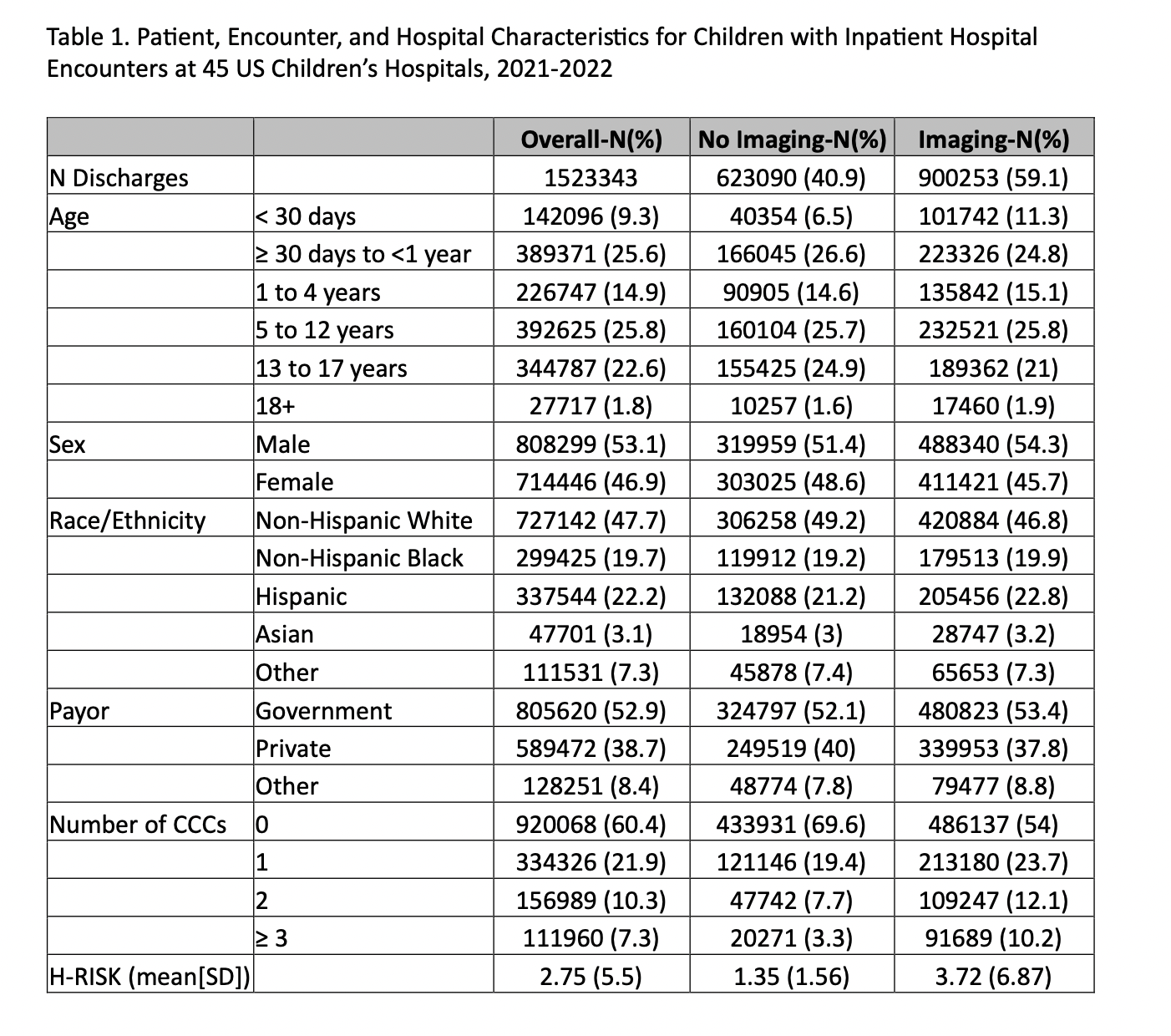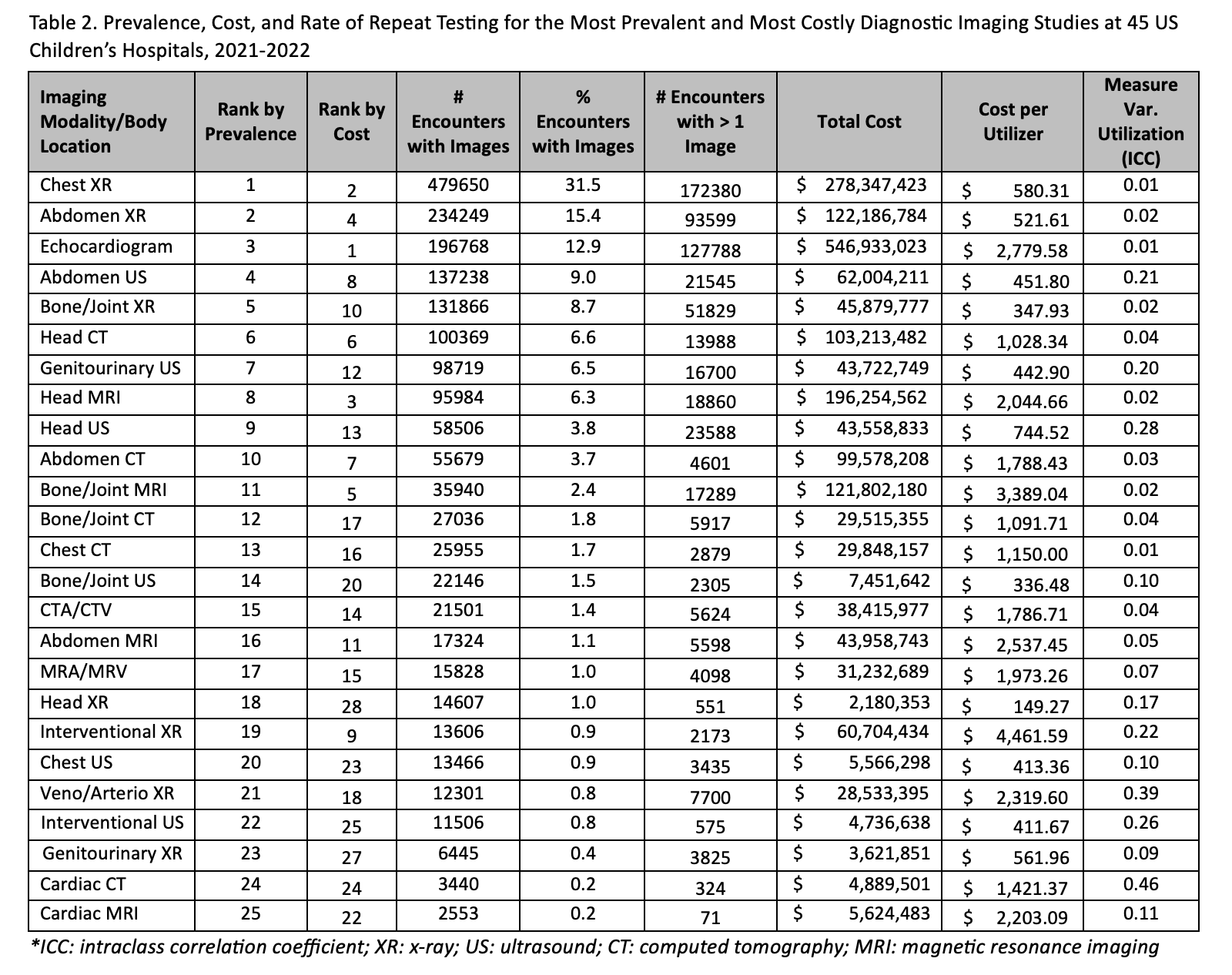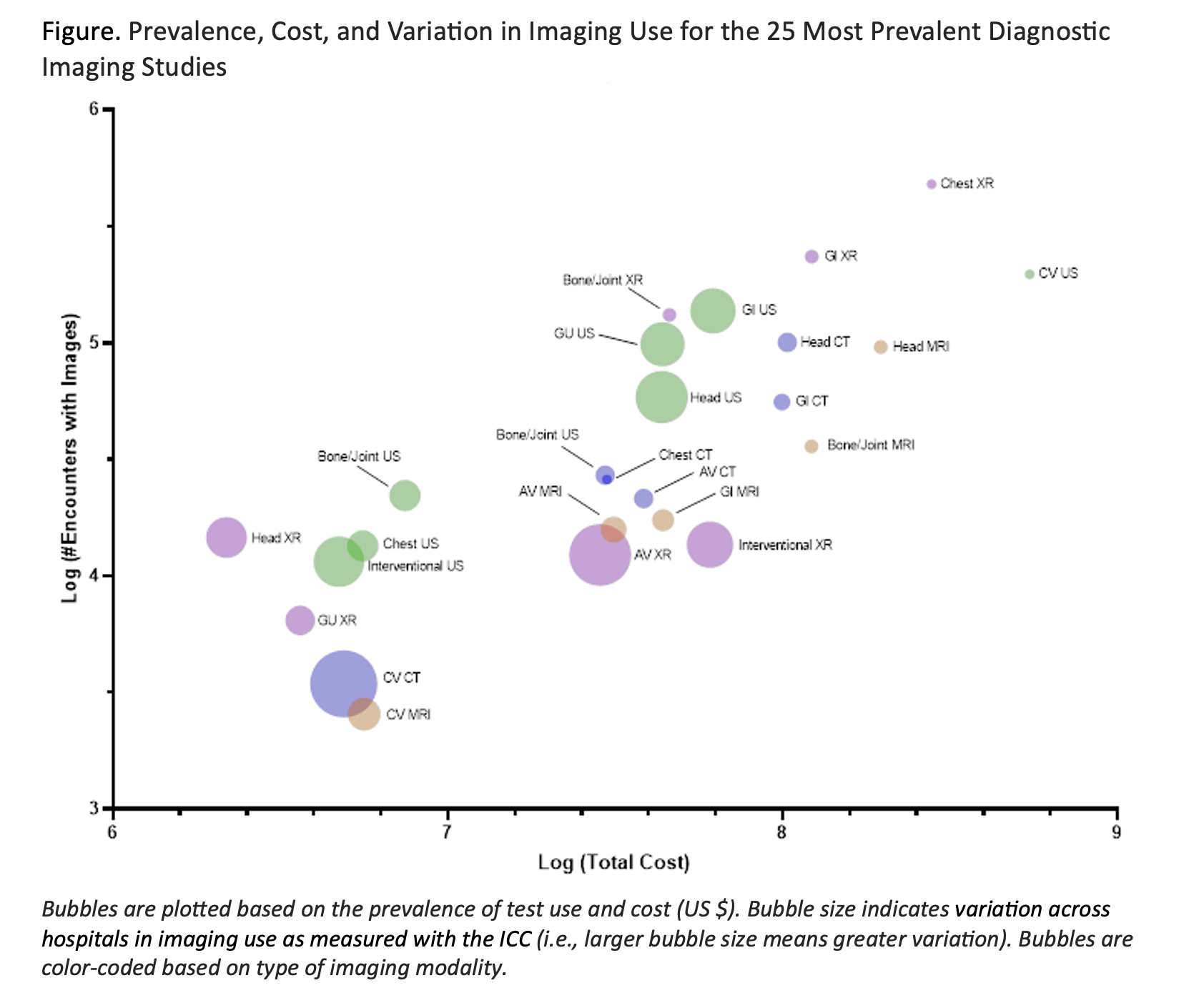Health Services Research
Session: Health Services Research 4: Population Monitoring and Management
251 - Understanding Inpatient Diagnostic Imaging Use in Children’s Hospitals to Prioritize Stewardship Efforts
Sunday, May 5, 2024
3:30 PM - 6:00 PM ET
Poster Number: 251
Publication Number: 251.2019
Publication Number: 251.2019

Megan Collins, MD, MPH (she/her/hers)
Pediatric Hospital Medicine Fellow
Children's Mercy Hospitals and Clinics
Kansas City, Missouri, United States
Presenting Author(s)
Background: Healthcare waste, including overuse of treatments or testing such as unnecessary diagnostic imaging, has estimated annual costs of over $760 billion in the United States. The most prevalent and costly imaging studies among hospitalized children are not known.
Objective: To describe diagnostic imaging studies among hospitalized children with the highest prevalence, cost, rates of repetition, and hospital variation to help inform de-implementation efforts.
Design/Methods: We performed a retrospective cohort study of children < 18 years of age hospitalized from 1/1/2021 to 12/31/2022 across 45 hospitals in the Pediatric Health Information System. We identified all radiologic imaging for inpatient and observation encounters using billing codes. We grouped images by modality and body location, and excluded images classified as other/unspecified body location. The intraclass correlation coefficient was used to measure variation across hospitals in imaging use after adjusting for age and severity. Higher numbers indicate a higher degree of variation.
Results: We identified 1,523,343 encounters; 59.1% had diagnostic imaging (Table 1). The most prevalent diagnostic imaging studies were chest x-ray (XR), abdominal XR, and echocardiogram. The images most frequently repeated were chest XR, echocardiogram, and abdominal XR. The costliest individual diagnostic imaging studies were echocardiogram, chest XR, and head/brain MRI (Table 2). Although chest XR was among the least expensive imaging modalities per unit cost, given the high prevalence of use and repeat use it was one of the costliest tests overall. Head US, interventional XR, and abdominal US had the highest variability of use between hospitals (Table 2, Figure).
Conclusion(s): Chest XR and echocardiograms were among the most prevalent, costly, and frequently repeated imaging studies. Abdominal XR, abdominal ultrasound, bone/joint XR, head/brain CT, and head/brain MRI were high in both prevalence and cost among hospitalized children. Five of the 10 most commonly used imaging techniques and four of the 10 most commonly repeated imaging techniques expose children to ionizing radiation. These results could help identify areas that should be targeted to reduce radiation exposure, improve care, and decrease costs for hospitalized children.



